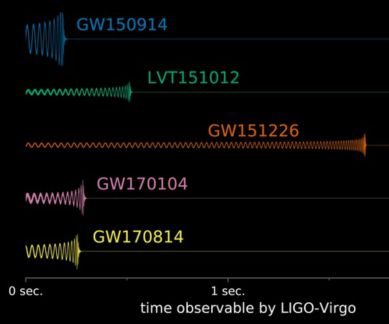Nobel Prize in Physics for 2017 awarded for discovery of gravitational waves
The 2017 Nobel Prize for Physics was jointly awarded to American physicists Barry Barish, Kip Thorne and Rainer Weiss for detection of gravitational waves.

The 2017 Nobel Prize for Physics was jointly awarded to American physicists Barry Barish, Kip Thorne and Rainer Weiss, who were the first to detect the presence of gravitational waves. The trio were founders of the Laser Interferometer Gravitational-Wave Observatory (LIGO), an organisation spread across 19 universities with over 1000 scientists. The institute saw the three make decisive contributions towards the LIGO detector, which helped prove the concept brought out by Albert Einstein’s Theory of Relativity.
Predicted by Einstein a century ago as part of his theory of general relativity, gravitational waves are “ripples” in space-time. Ripples is the general matter that the universe is composed are caused by ultra-violent processes, such as colliding black holes or the collapse of stellar cores. Space time is the four dimensional array in which events and celestial bodies of the universe are observed. Gravity is developed when heavy objects bend space and time.
monthly limit of free stories.
with an Express account.
Weiss, a Physics professor with Massachusetts Institute of Technology, has been awarded half of the 9 million Swedish kronor prize money, while Kip Thorne, a theoretical physicist at California Institute of Technology and Barry Barish, who is a professor of Physics with Caltech will share the other half.
The detection of gravitational waves is not possible visually, and the sound released by the waves is too faint to be detected. Hence, the scientists with LIGO designed an equipment called the interferometer, the device that helped make the breakthrough. This device is meant to anaylse beams, which are sent by any disturbance in the gravitational wave pattern. The system maintains high accuracy, and is built to never shake.
The LIGO team first detected the waves on September 14, 2015, as they observed the merging of two black holes 1.3 billion light years away. The interference captured as a result of this event led to the successful observation of gravitation wave patterns. This discovery brought almost 50 years of effort to fruition, as Weiss had first considered designing an interferometer in 1972.
“Gravitational waves spread at the speed of light, filling the Universe, as Albert Einstein described in his general theory of relativity. They are always created when a mass accelerates, like when an ice-skater pirouettes or a pair of black holes rotate around each other,” the Nobel jury explained.
The LIGO team detected gravitational waves on three further instances since 2015. When Barry Barish was contacted by AP, he stated that “the Nobel was a big win, a win for Einstein.”
With agency inputs